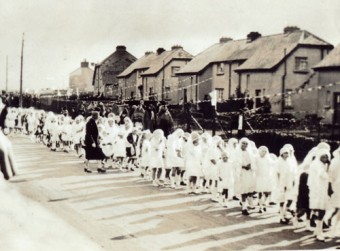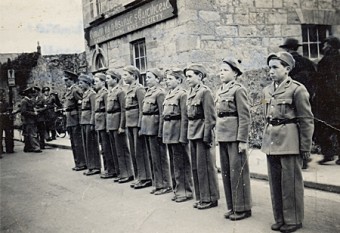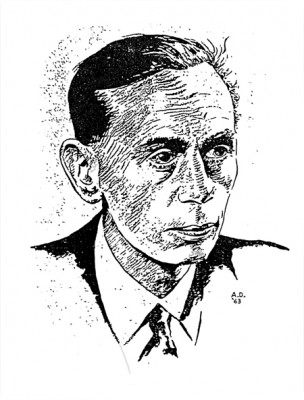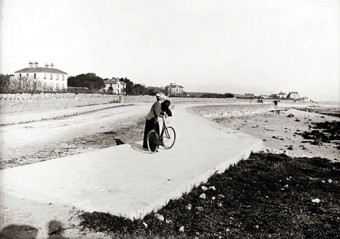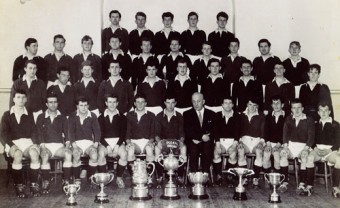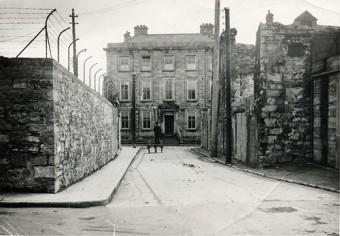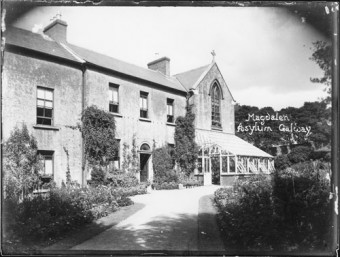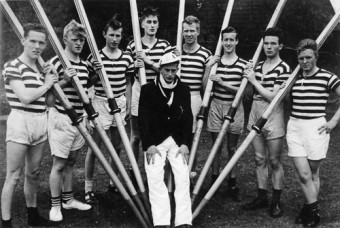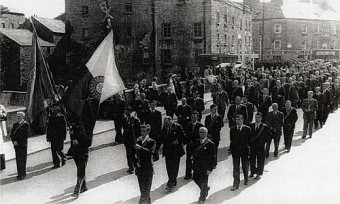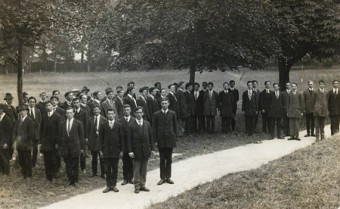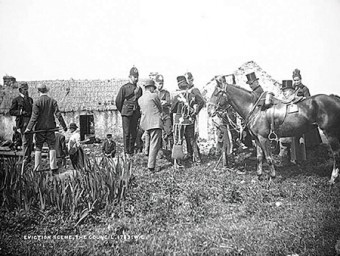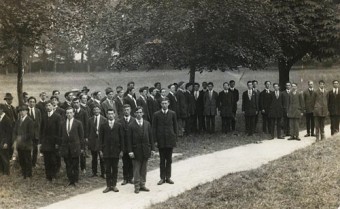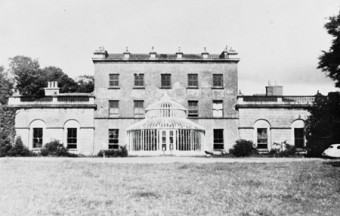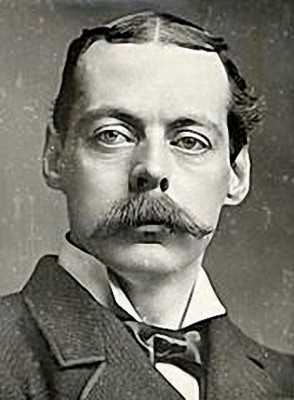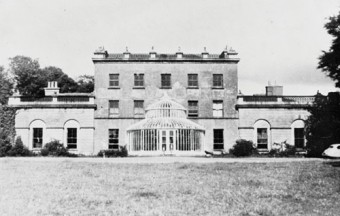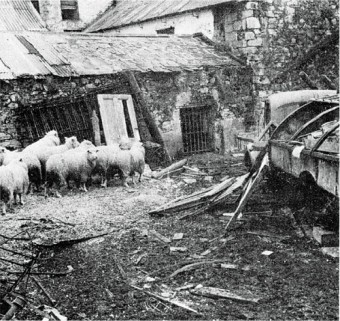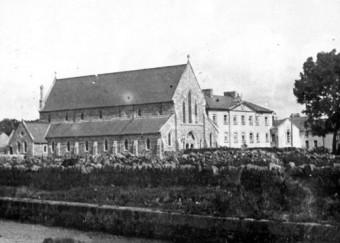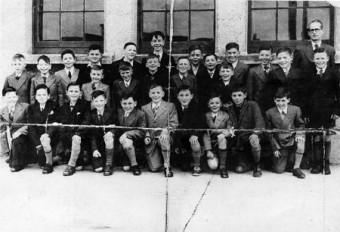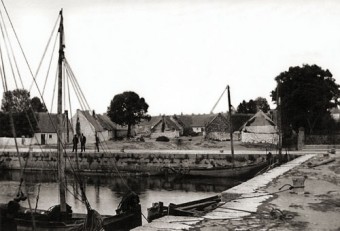The May procession
Thu, May 09, 2013
The month of May is named for and dedicated to Mary, the Blessed Virgin. Many people like to honour the Virgin during that month by putting up a May altar in their house, usually on a small table or sideboard covered with a white cloth. In the place of honour is a Marian picture or statue and it is decorated with May flowers. In some parishes they have a ceremony where they crown an image of Mary with paste jewels, and in others, they hold a May procession in which those taking part walk bareheaded (weather permitting), in decent costume and with reverent mien. Clergy and laity, men and women, are separated. The cross is usually carried at the head, and sometimes banners embroidered with sacred pictures. These often represent sodalities but should never be of military or triangular in shape.
Read more ...The Knights of Malta in Galway
Thu, May 02, 2013
The first unit of the Order of Malta in Galway began in 1937 when Dr Conor O’Malley was asked by the Marquis McSweeney, the then chancellor of the Irish Association, to recruit members to form an ambulance corps aimed initially at Connacht only.
Read more ...Kevin Faller, Galway poet
Thu, Apr 25, 2013
Kevin Faller was born in the Crescent in 1920. His father was John Patrick Faller and his mother was Madeleine Quinn from Tuam. They both died within six months of each other when Kevin was very young, so he and his brother Liam were brought up by their grandfather Stephen Faller. Kevin’s aunt Minnie, who was married to Nicholas O’Halloran, also helped to rear him.
Read more ...Walking the Prom
Thu, Apr 18, 2013
Towards the end of the 19th century, tourism interests in Galway used to advertise the Promenade as a place unrivalled in the country, where one could take the healthy invigorating salt air like nowhere else. In those times, it was just a narrow crooked roadway, very rough and untarred, and the footpath seemed to extend from Palmer’s Rock to roughly opposite the entrance to Rockbarton, if one is to judge from how it finishes in the foreground of our photograph, which was taken c1890. The road was known as the Lower Sea Road. The houses in the background are Belmore, owned by McDonoughs; Brinkwater, owned by Maurice De Courcey Dodd; and Maretimo, owned by the O’Beirne family.
Read more ...UCG Rugby Club
Thu, Apr 11, 2013
The rugby club in UCG was founded in 1874, which makes it the oldest such club in Connacht. They played in the Bateman Cup competition many times and won their first Connacht Senior Cup in 1897. They have held this trophy aloft 34 times in all, more than any other club in the west, and they have won the senior league 16 times. They won the Dudley Cup for the first time in 1905. Many of their players have played for Irish universities international teams, and 10 have been capped for Ireland, several while playing for UCG. One of those, Ciaran Fitzgerald, captained the British and Irish Lions. The UCG colours are maroon and white.
Read more ...Mayoralty House and Lower Cross Street
Thu, Mar 28, 2013
This photograph of Cross Street was taken in 1946. Early maps of the city show an open air altar at the end of the street. It was built by the Dominicans and used for various processions and Corpus Christi. The building facing us is Mayoralty House which was originally built in 1793 for a member of the Daly family. This family exclusively held the office of mayor from 1776 to 1816. It was probably built by James Daly, who was mayor in 1804, 1810, 1814, 1818, and 1819. The Dalys owned the house until the late 1840s. In Griffith’s Valuation in 1855, there is no mention of Mayoralty House, but a house fitting its description belongs to the Town Commissioners. These had replaced the mayor and corporation about 1935. It was later used as a police barracks.
Read more ...The Magdalen Asylum, Galway
Thu, Mar 21, 2013
The Magdalen Asylum in Galway was founded in 1824 by a private person, Ms Lynch, and was managed by a society known as the Association of Ladies of the Saint Magdalen Society. At the request of the founder, the Sisters of Mercy became responsible for the operation of the institution following her death in 1845. The laundry and living quarters were separate from the convent/mother house in Galway. The living quarters included three dormitories, a kitchen, dining room, infirmary, recreation room, and a chapel. There was also a farm across the road.
Read more ...The head of the river
Thu, Mar 14, 2013
Rowing is a sport of endurance, strength, and finesse, a sport naturally suited to Galway where the river connects Lough Corrib with the sea. The earliest reference we have to competitive rowing on the Galway river is 1839. The first rowing club established here was the Corrib Rowing and Yachting Club in 1864 (149 years ago!) and as other clubs formed, rowing matches became more competitive. In 1868, Commercial Rowing Club was formed and the inter-club rivalry generated a lot of interest in the sport.
Read more ...A procession on O’Brien’s Bridge
Thu, Mar 07, 2013
Our photograph today is of a group from the Sodality in the Jes being led by Bobby Molloy with the IHS flag. They are crossing O’Brien’s Bridge as part of the annual Procession of the Most Blessed Sacrament. Willy Forken is in front of the right hand row, and among the others are Johnny Holland and Johnny Whelan.
Read more ...Student revolutionaries
Thu, Feb 28, 2013
Seamus Murphy was the officer commanding the Galway Brigade of the IRA from 1917 to 1920. He was very conservative and vetoed a lot of proposed operations. He eventually moved back to Dublin where he was heard complaining that he could not get any Galway men to fight.
Read more ...What more could a landlord do?
Thu, Feb 28, 2013
Despite some honourable exceptions the conduct of most Galway landowners to their tenants during the latter part of the 19th century was a disgrace. It led to disastrous social consequences. Although ultimately, the landed class were removed from their houses and lands, as a result of the Land War and acts of parliament; in many cases the peasantry too was decimated, demoralised and scattered to the winds.
Read more ...Student revolutionaries
Thu, Feb 28, 2013
Seamus Murphy was the officer commanding the Galway Brigade of the IRA from 1917 to 1920. He was very conservative and vetoed a lot of proposed operations. He eventually moved back to Dublin where he was heard complaining that he could not get any Galway men to fight.
Read more ...The Joyces of Mervue
Thu, Feb 21, 2013
The first recorded use of the name Joyce was Joy in the 13th century State papers. Sometime the name was rendered as Joy, Joyces, Jorz, Jorse, or the standard spelling, Joyce. The Joyces of Mervue were a distinguished branch of the family. Marcus Joyce, a rich merchant who bought land in County Mayo in the late 16th century, was probably the founder of this branch. About a century later, the Joyces emerged as a leading merchant family in Galway. Hardiman states that Joyce’s house was at the corner of Abbeygate Street and Market Street and that this family was head of the name. They were eminent wine merchants.
Read more ...‘If you want to know who I am, I am John D Mahon of Ballydonnellan castle’
Thu, Feb 21, 2013
Week II
The Joyces of Mervue
Thu, Feb 21, 2013
The first recorded use of the name Joyce was Joy in the 13th century State papers. Sometime the name was rendered as Joy, Joyces, Jorz, Jorse, or the standard spelling, Joyce. The Joyces of Mervue were a distinguished branch of the family. Marcus Joyce, a rich merchant who bought land in County Mayo in the late 16th century, was probably the founder of this branch. About a century later, the Joyces emerged as a leading merchant family in Galway. Hardiman states that Joyce’s house was at the corner of Abbeygate Street and Market Street and that this family was head of the name. They were eminent wine merchants.
Read more ...Galway abattoir
Thu, Feb 14, 2013
In the early days, farmers killed their own livestock, and in urban areas the killing was done by butchers. These victuallers would hang raw carcasses of meat outside their shops to show how fresh they were and to attract customers. It was only when the city fathers built an abattoir at the junction of Newtownsmyth and Bowling Green that slaughtering became subject to veterinary inspection and control in Galway. Our photograph was taken in 1966 and shows sheep awaiting their turn to enter the slaughterhouse through the grill gateway. They had already been in the yard for five days. The yard was connected to the abattoir buildings.
Read more ...St Joseph’s Church
Thu, Feb 07, 2013
On this day, February 7, in the year 1886, St Joseph’s Church was consecrated. It was to be the main church of the Parish of Rahoon, which at that time extended from Corcullen to Furbo. There were already two chapels in the parish, one in Bushypark and one in Barna, and they served their own areas. For those parishioners living closer to the town, there was no designated church. Some would attend Mass in the chapel of the Presentation Convent, but it was not very large and worshippers often had to kneel on the ground outside, irrespective of the weather conditions. The parish had a big population and major annual events such as confirmation had to be moved to the Pro-Cathedral.
Read more ...Calling all Claddagh School past pupils
Thu, Jan 31, 2013
The historian James Hardiman, in describing the Claddagh, said: “It is said that they considered it a kind of reproach either to speak English or to send their children to school, and that a schoolmaster among them would be considered a phenomenon; but of late there are some exceptions to this rule. How far education would make these people happier in themselves, or more useful members of society, is a matter of doubt, but it is certain that the trial has never been made, although a most respectable convent lies at the head of their village, to which they are liberal benefactors.”
Read more ...The Claddagh Quay
Thu, Jan 24, 2013
This photograph of the quayside in the Claddagh is one of the remarkable images in a book entitled Jane W Shackleton’s Ireland compiled by Christiaan Corlett and published by Collins Press. Jane Shackleton was given a camera and she went around Ireland with it between 1891 and 1906. She built up a remarkable collection, some of which are included in this delightful book.
Read more ...